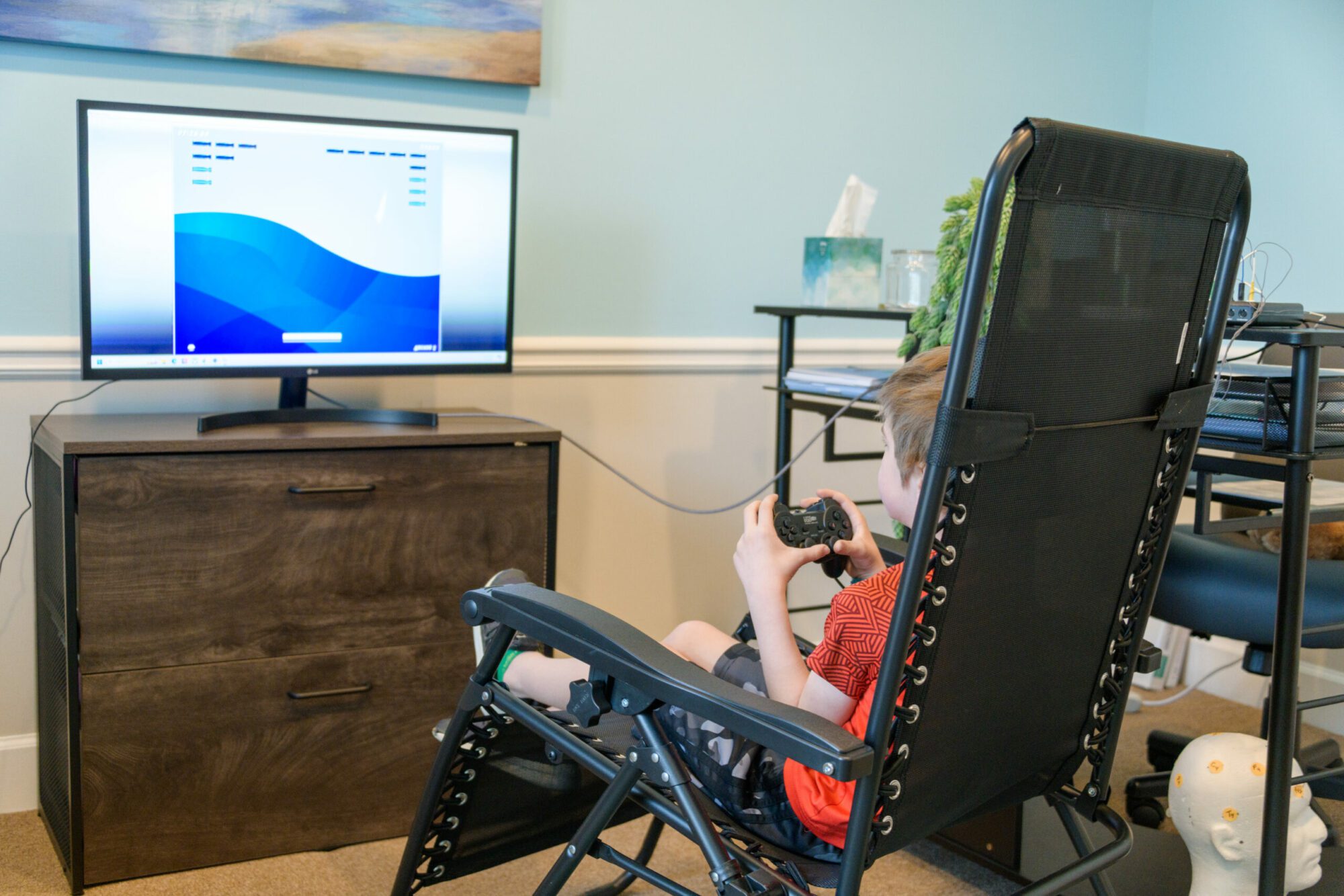When I began working in the mental health field in 2011 the primary tools we had were a variety of talk therapy theories/skills and, if needed, a referral to a psychiatrist or hospital care. There were other tools available, but they were not what new clinicians were being handed. Since that time the field has begun to talk a LOT more about the concept of trauma, how our nervous system plays into both trauma and mental health states, and how to expand the toolbox for clients–this has been a great development and enabled a focus on what is called “trauma resolution” for clients.
With this expanded toolbox, you may wonder how to identify what is best to support you or your client. For this post, we will focus on the differences and overlaps between EMDR and Neurofeedback, and why I would recommend one direction or the other. For full disclosure, I am a certified Neurofeedback provider and utilize that approach in my work with clients when beneficial.
EMDR or Eye Movement Desensitization and Reprocessing Therapy is “a psychotherapy treatment that was originally designed to alleviate the distress associated with traumatic memories (Shapiro, 1989a, 1989b).” In EMDR, clients recall a traumatic or distressing memory while also focusing on external stimuli, typically lateral eye movements, though other forms of stimuli may be used. The theory being that this allows the brain to access necessary pathways to reprocess the trauma in a way that it can be hopefully properly resolved, new associations can be made, and the individual can move forward. More detailed information on EMDR theory can be found here. In general, EMDR is a shorter-term approach, sometimes just 3-6 sessions may be provided to see results, and it can provide a much faster movement towards therapy goals than talk therapy alone for the appropriate client.
Neurofeedback or EEG Biofeedback is a brain-based biofeedback intervention, in which information about the electrical activity in different locations in the brain is collected via electrodes placed on the scalp, and fed back to the client by watching a movie or other audio-visual input. There are several different theories of why this works, but what we observe is that the brain takes this information and auto-corrects to new ways of functioning. Neurofeedback is used for trauma, but is a whole brain intervention, and can be applied to many types of brain-based diagnoses including anxiety, ADHD, autism, depression, sleep disorders, migraine, epilepsy, dementia, and so forth. The general goal is to stabilize and calm the nervous system, which supports healthy brain function. Like EMDR, there is also an aspect where Neurofeedback can be used for trauma resolution and moving therapy forward, but there is also an overall expectation of what I call “moving the baseline” i.e. are the client’s symptoms becoming better managed in a way that moves to a new and healthier level of daily functioning. Neurofeedback is a longer form intervention, typically 20-30 sessions (sometimes more if needed), and nearly all clients are appropriate. For more information on Neurofeedback, you can check out my previous post here.
So, how do you consider what is right for you? I like to think about this in terms of
1) Individual System Readiness 2) What is being resolved
- Individual System Readiness
- How well do you handle triggers of your trauma? Are you able to use skills to calm yourself after difficult emotions arise?
- What is being resolved
- Concrete traumatic events?
- Complex trauma?
- Nervous system instabilities such as migraines/headaches, panic attacks, chronic pain?
- General mental heath?
- Sleep disorders?
If you are seeking to do specific trauma work and have the ability to recall your traumatic events and manage the emotional impact of that experience, then EMDR can be an excellent tool to support and speed your therapy. If you struggle to manage that emotional impact, or are needing an approach that will pull in more areas of the brain, Neurofeedback will appropriately support your work. EMDR does have applications outside of trauma treatment, but its scope is more focused than Neurofeedback. If you would like to learn more about either approach, click here set up a consultation for Neurofeedback or to be connected with one of my colleagues who provide EMDR!
